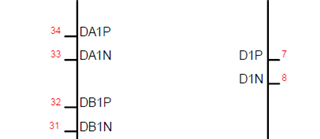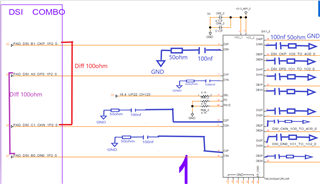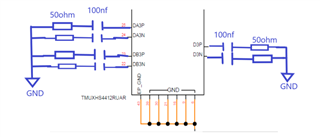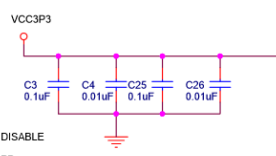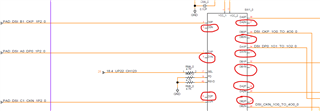Tool/software:
Hi TI,
we'd like to select TMUXHS4412RUAR on MIPI verification.
I have two questions:
1) to get a better crosstalk, we'd like to make the gap bigger between used pads. For the unused ports P or N, how should we design?
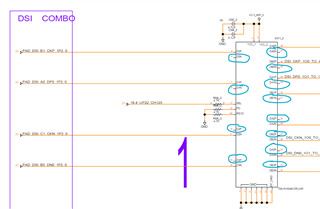
2) for the below unused channels P and N, how should we design?
